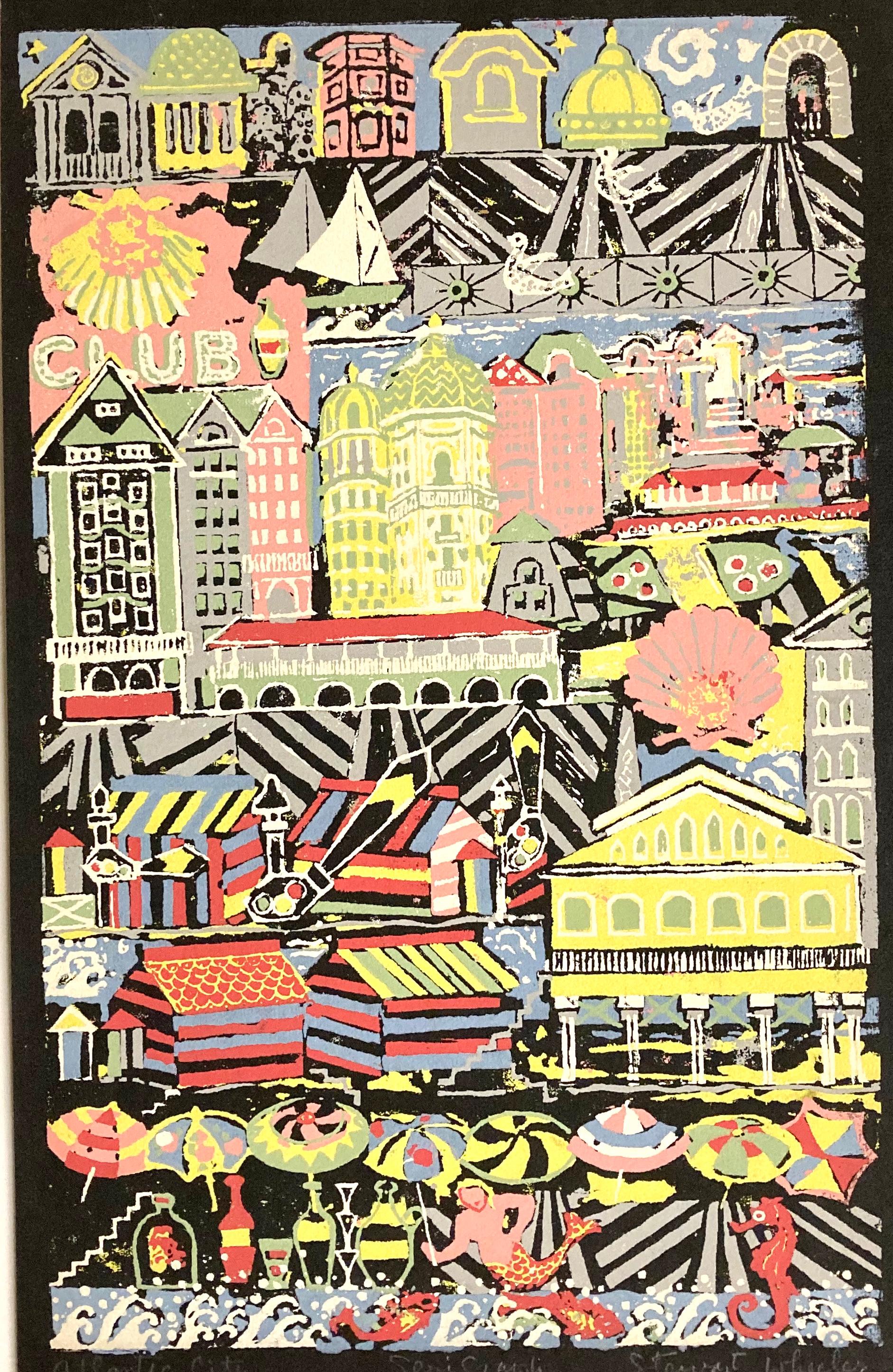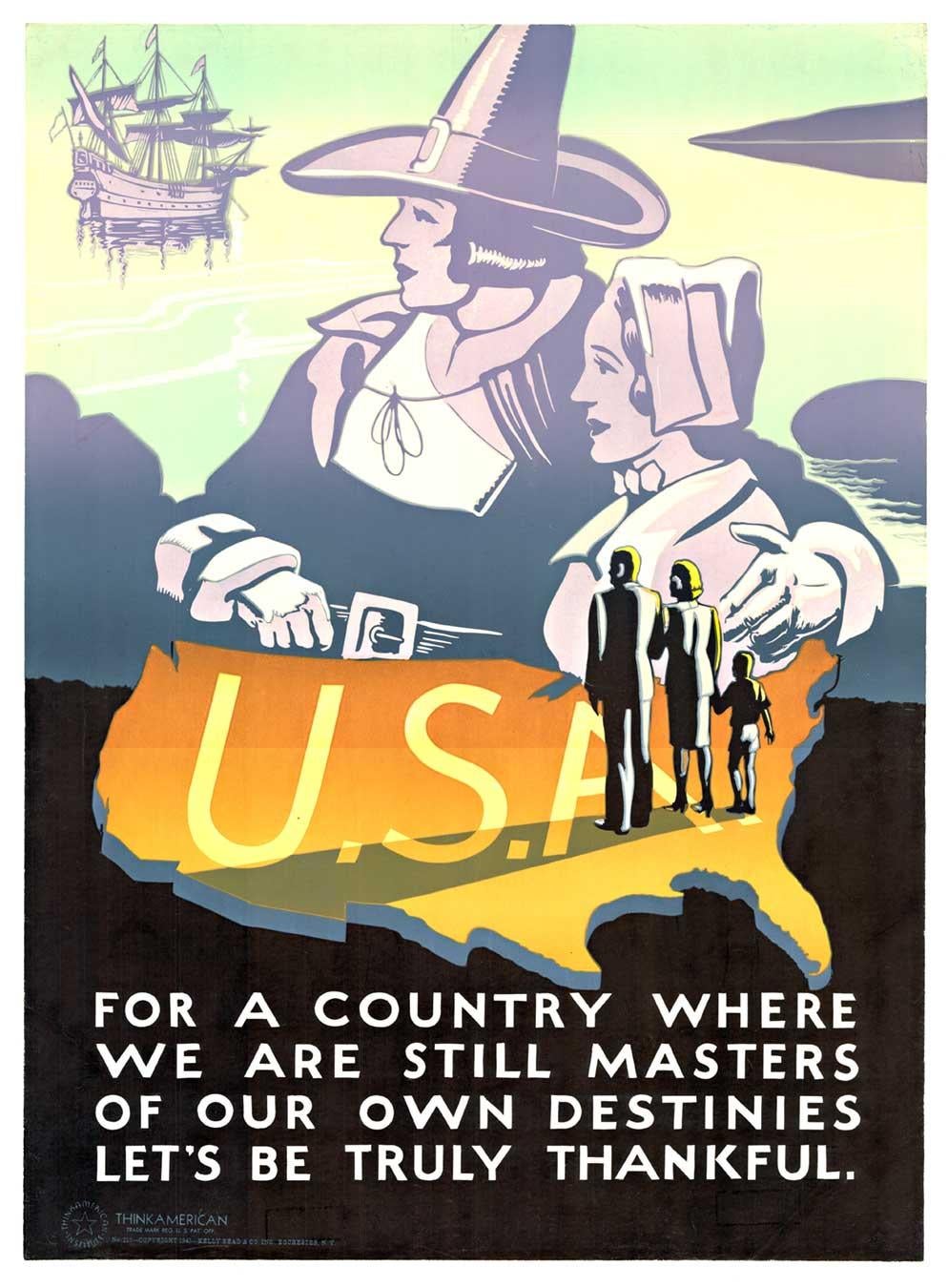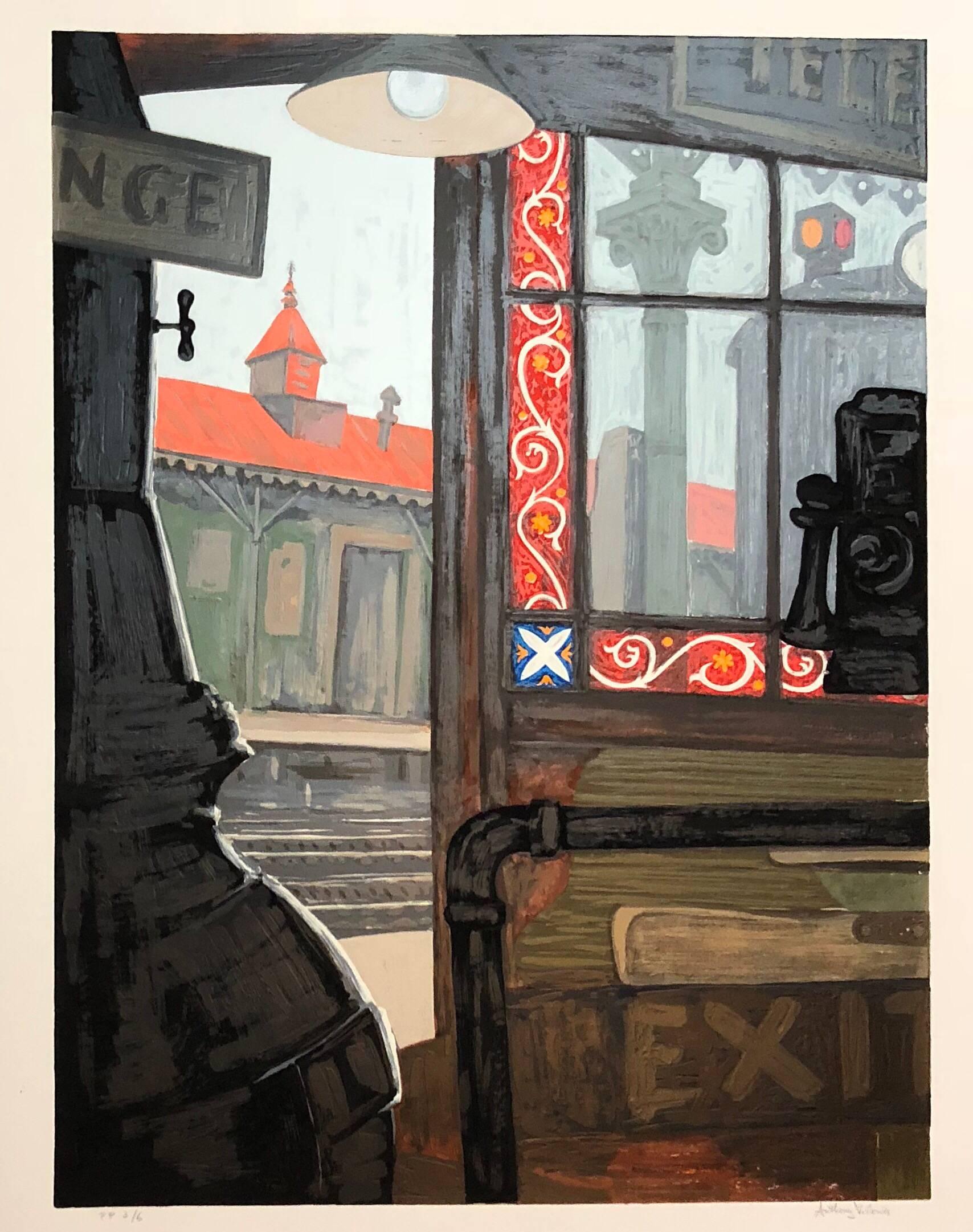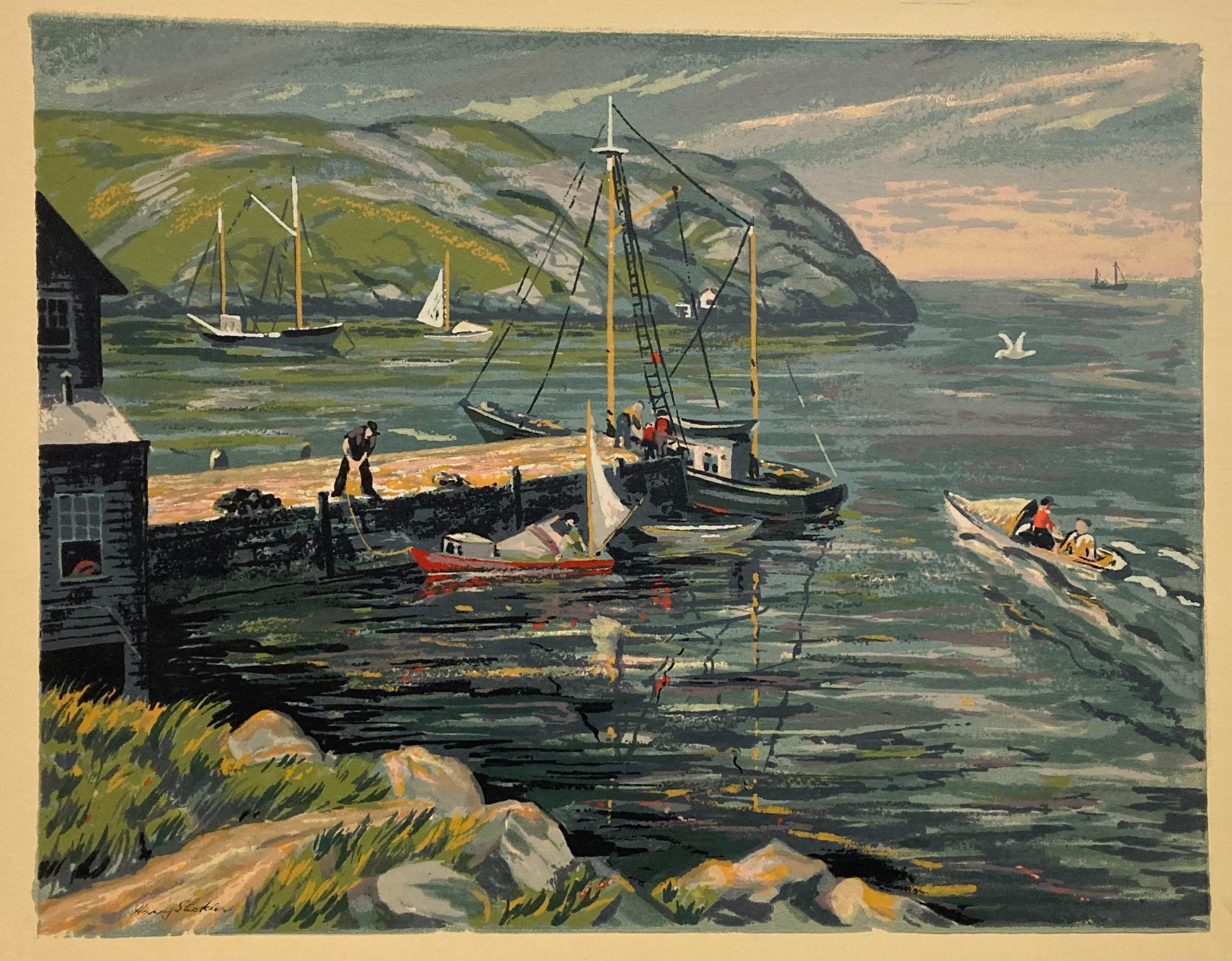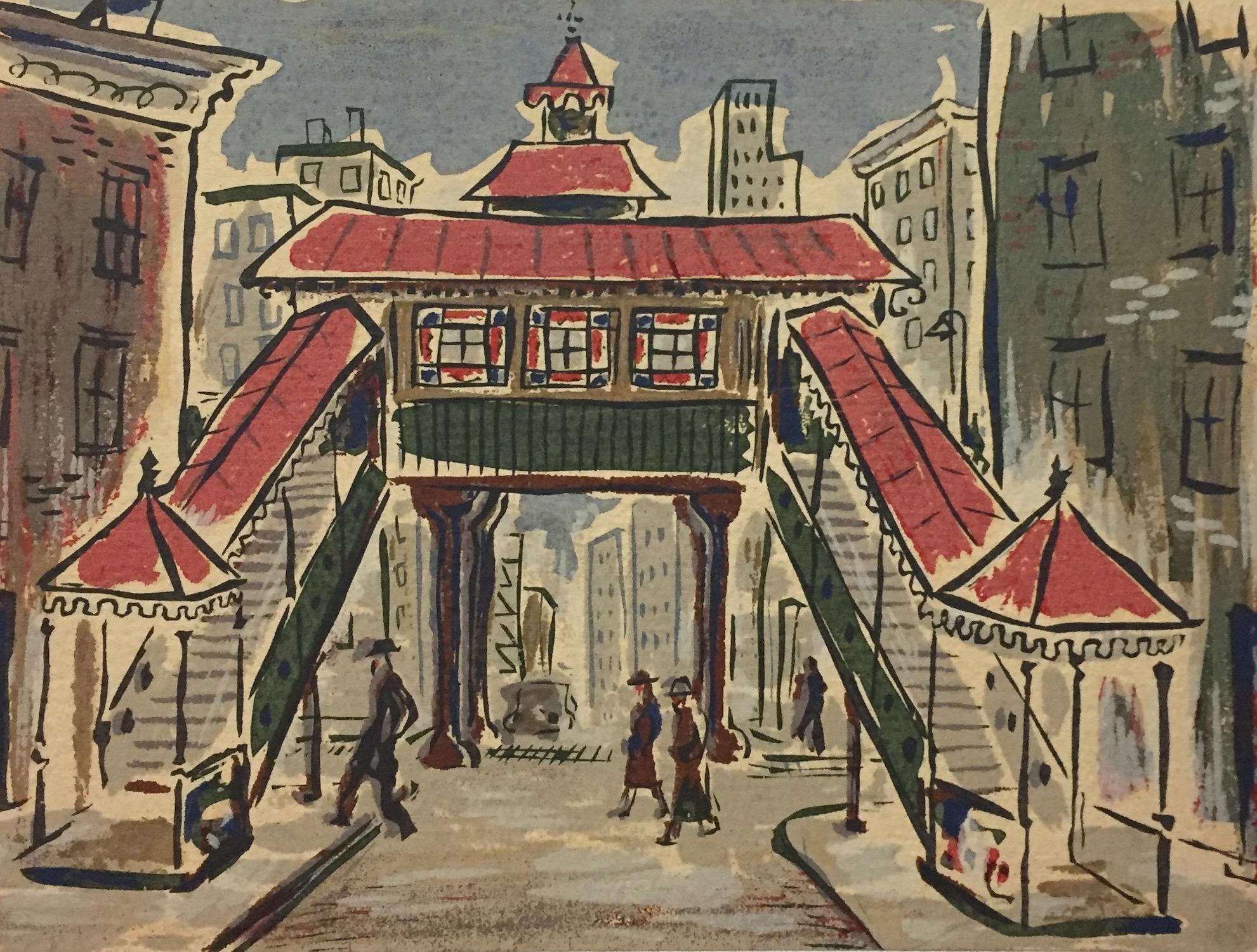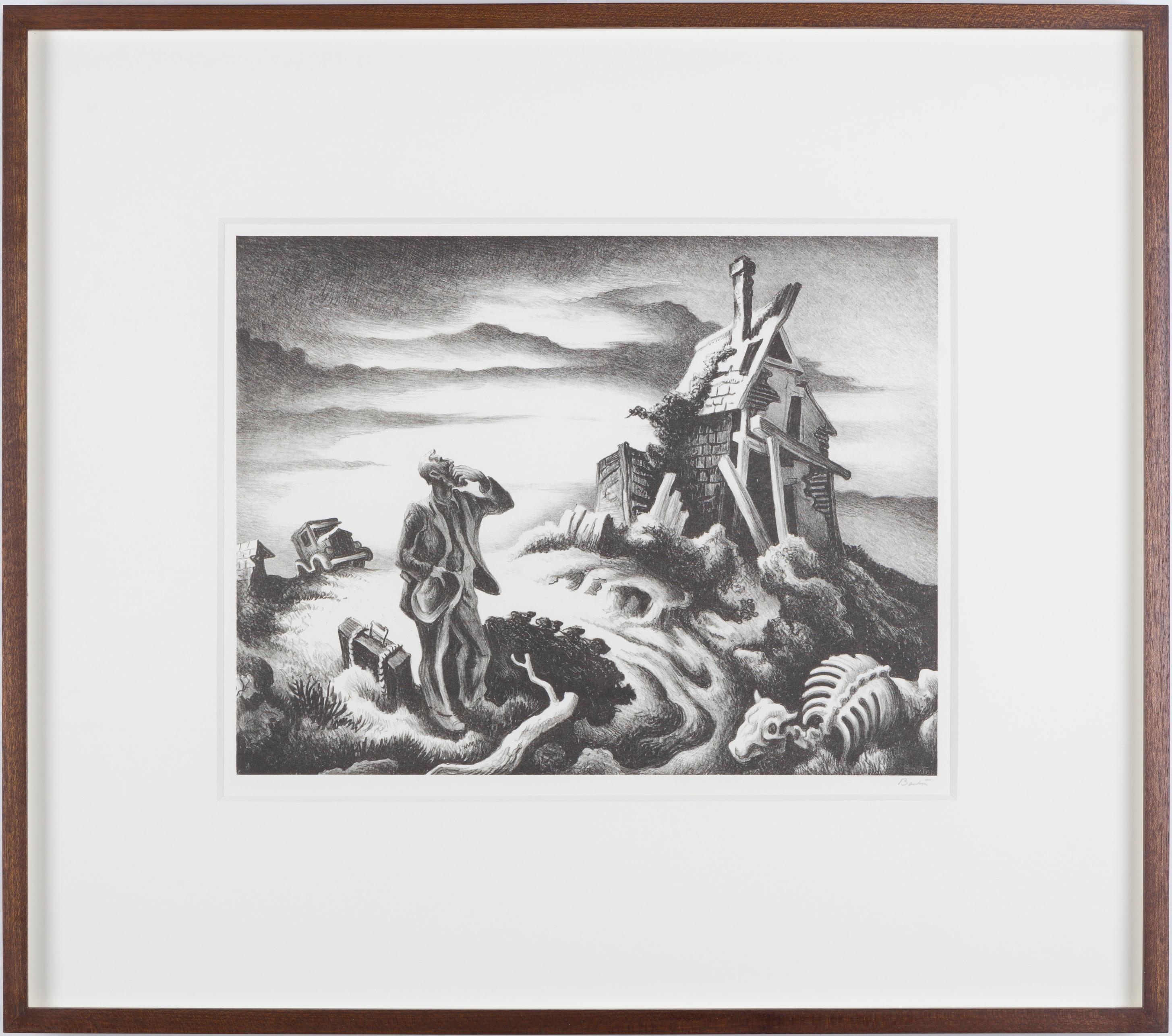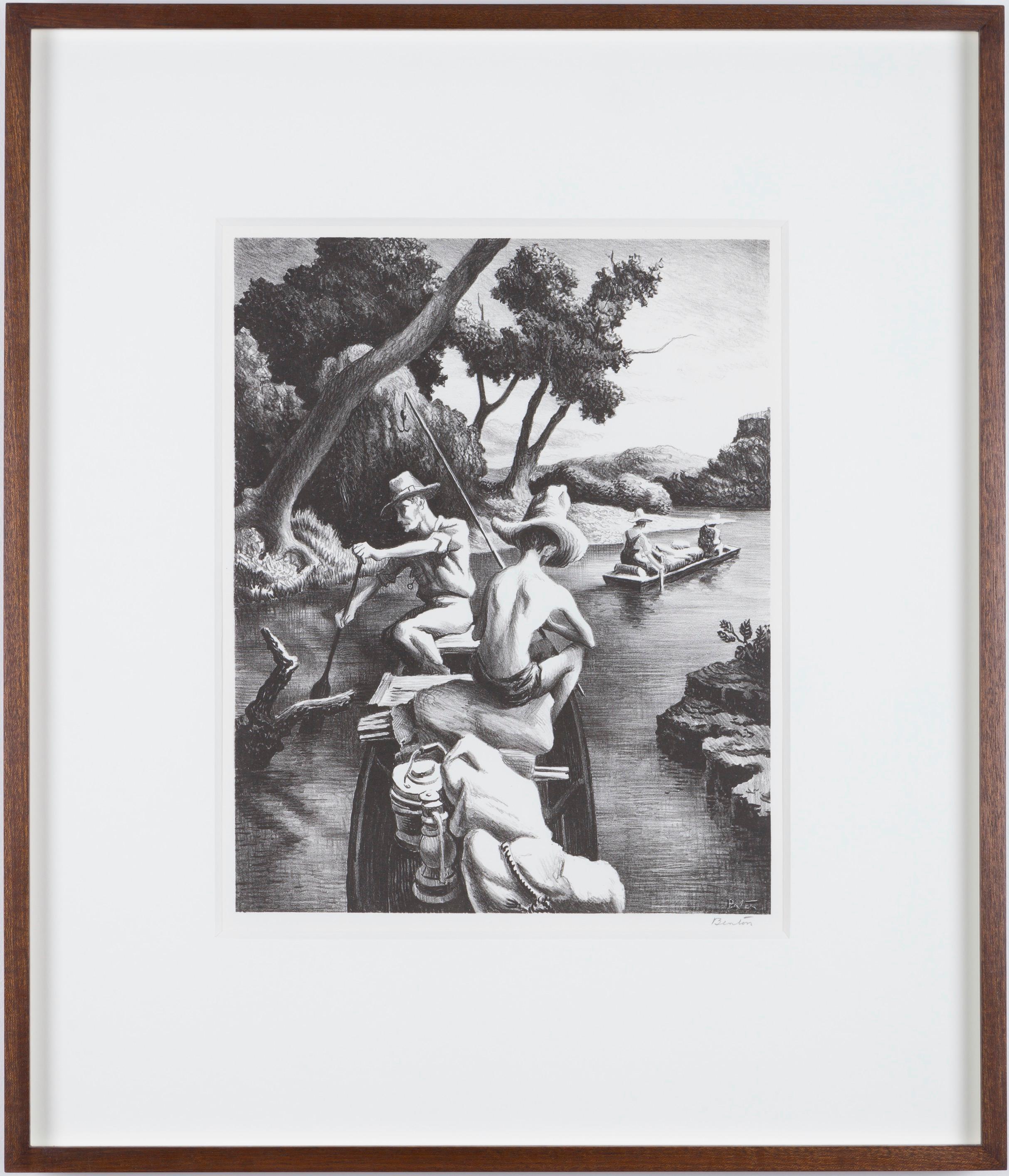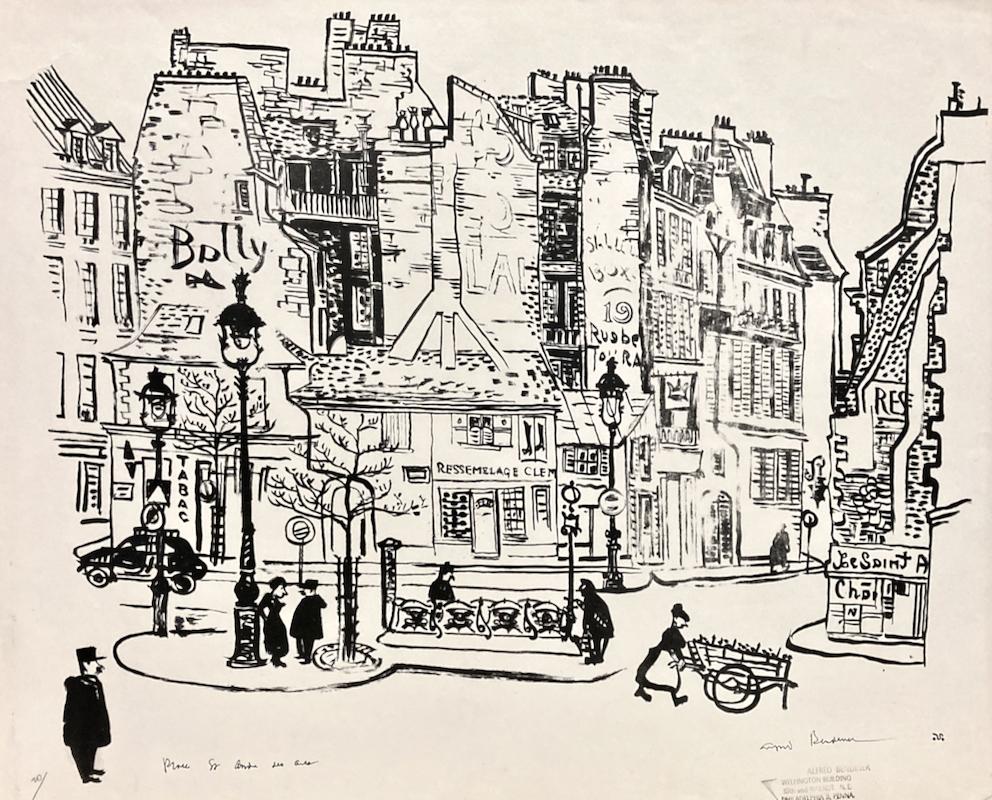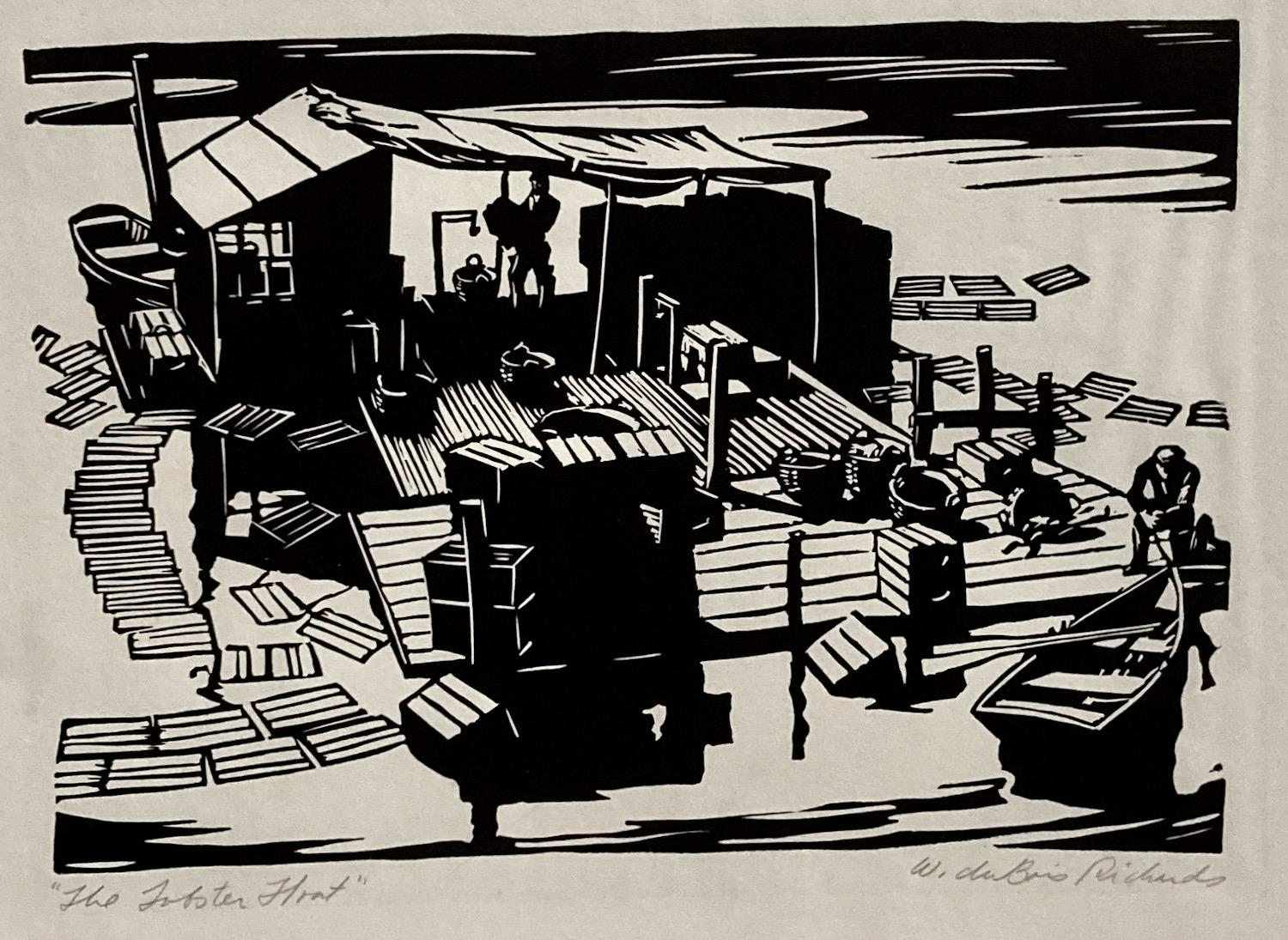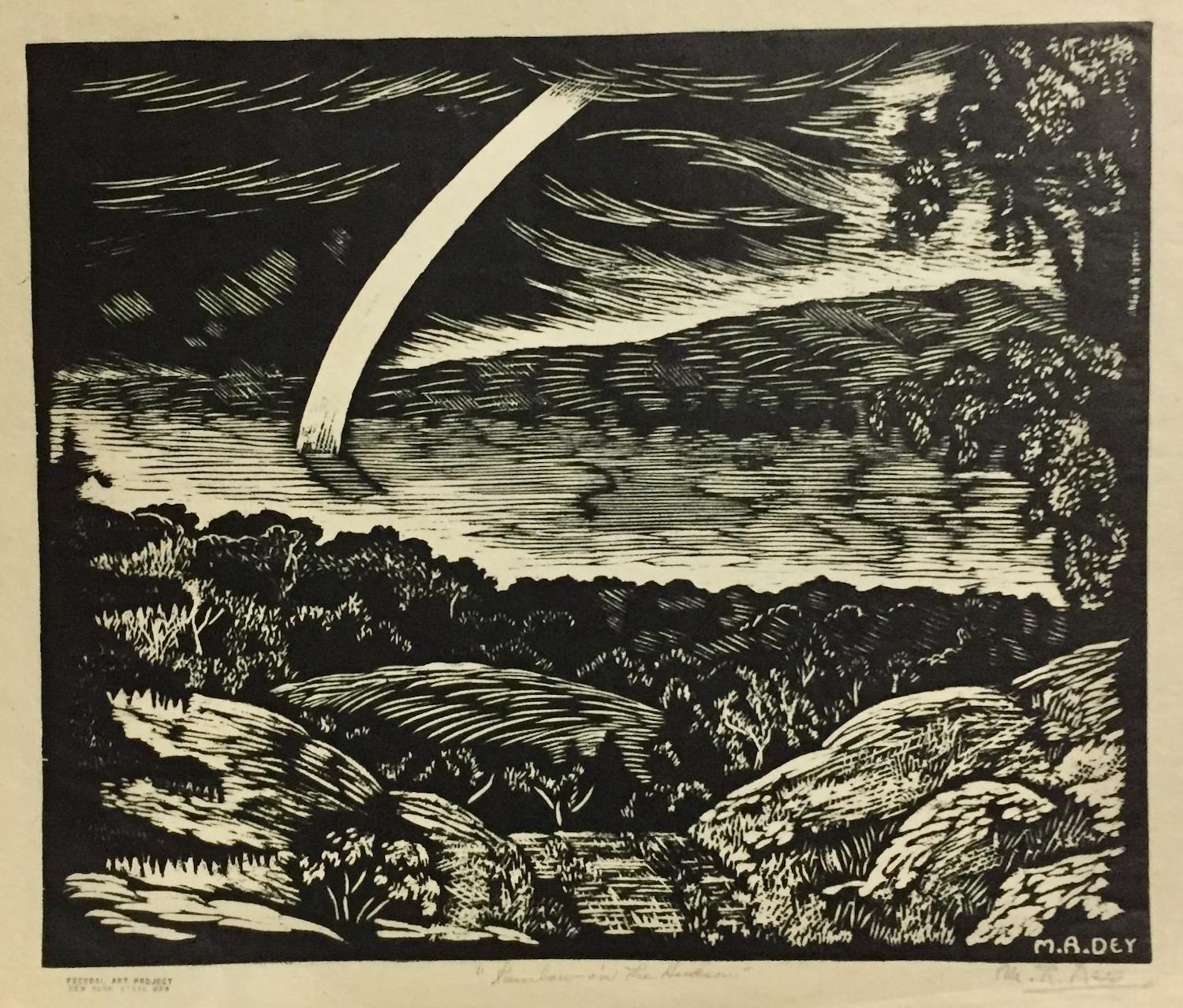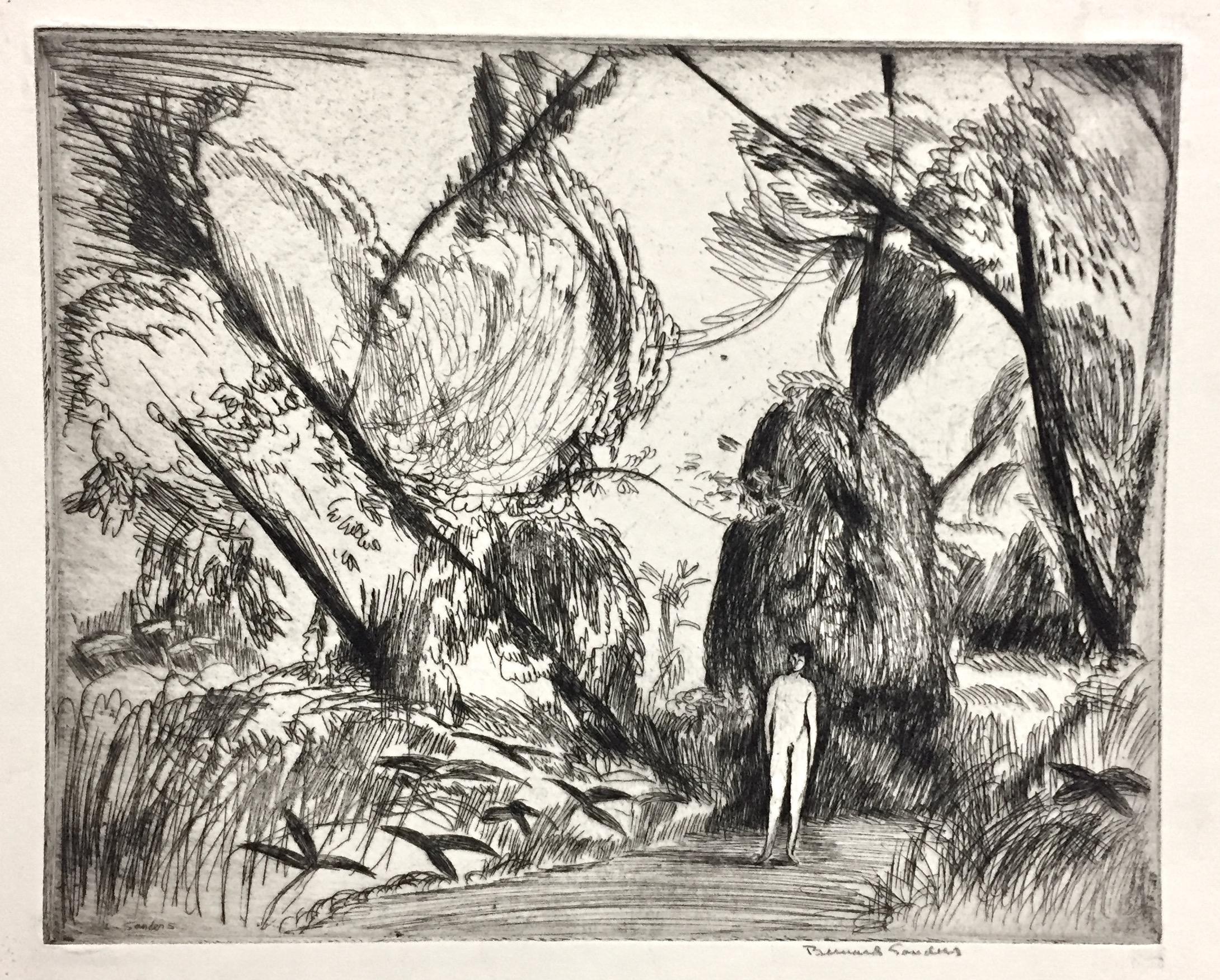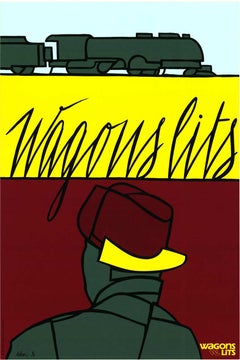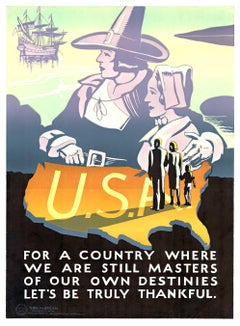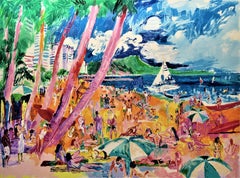
Diamond Head, Hawaii
View Similar Items
Want more images or videos?
Request additional images or videos from the seller
1 of 12
LeRoy NeimanDiamond Head, Hawaii1988
1988
About the Item
- Creator:LeRoy Neiman (1921 - 2012, American)
- Creation Year:1988
- Dimensions:Height: 34.25 in (87 cm)Width: 44.25 in (112.4 cm)Depth: 0.01 in (0.26 mm)
- Medium:
- Movement & Style:
- Period:
- Condition:
- Gallery Location:San Francisco, CA
- Reference Number:Seller: ler/dia/hea/haw/011stDibs: LU66637266232
About the Seller
5.0
Platinum Seller
These expertly vetted sellers are 1stDibs' most experienced sellers and are rated highest by our customers.
Established in 1999
1stDibs seller since 2017
681 sales on 1stDibs
Typical response time: 1 hour
More From This SellerView All
- Low TideLocated in San Francisco, CAThis artwork titled "Low Tide" 1943 is an original lithograph by New York artist Julian Edwin Levi, 1900-1982. It is hand signed in pencil by the art...Category
Mid-20th Century American Modern Figurative Prints
MaterialsLithograph
- Landscape with TreesBy Robert KipnissLocated in San Francisco, CAThis artwork "Landscape with Trees" c.1980 is an original lithograph on wove paper by noted American artist Robert Kipniss, b.1931. It is hand si...Category
Late 20th Century American Modern Landscape Prints
MaterialsLithograph
- Silver TreesBy Robert KipnissLocated in San Francisco, CAThis artwork titled "Silver Trees" c.1970 is an original lithograph on wove paper by noted American artist Robert Kipniss, b.1931. It is hand signed and nu...Category
Late 20th Century American Modern Landscape Prints
MaterialsLithograph
- LandscapeBy Robert KipnissLocated in San Francisco, CAThis artwork "Landscape" c.1980 is an original color lithograph on wove paper by noted American artist Robert Kipniss, b.1931. It is hand signed and numbered 168/200 in pencil by the...Category
Late 20th Century American Modern Landscape Prints
MaterialsLithograph
- La Fete a HonfleurBy Fanch (Francois Ledan)Located in San Francisco, CAThis artwork, "La Fete a Honfleur" c.1980 is a original colors serigraph on Wove paper by French artist (Fanch) Francois Ledan, born 1949. it is hand signed an...Category
Late 20th Century Modern Landscape Prints
MaterialsScreen
- Mirror PassBy Earl BissLocated in San Francisco, CAThis artwork titled "Mirror Pass" 1977 is an original color screenprint by noted Native American artist Earl Biss, 1947-1998. It is hand signed, dated and numbered 37/100 in pencil by the artist. The artwork (image) size is 29 x 21 inches, framed size is 38.5 x 30 inches. Custom framed in a wooden silver and blue frame, with fabric matting. It is in excellent condition. About the artist: Born in Washington state, Earl Biss became a well-known Native American artist. He was raised by his grandmother on the Crow reservation in Montana and earned a scholarship to the Institute of American Indian Art in Santa Fe where he studied jewelry design. He attended the San Francisco Art Institute and then traveled widely in Europe where he was heavily influenced by the impressionist style of Monet and other European artists. His paintings have a dream-like, abstract quality with Indian figures merging with the landscape. He worked on numerous paintings, sometimes as many as twenty, simultaneously. On October 18, 1998, he died from a stroke while in his studio painting. • 1965 - 1966 Studied at the Institute of American Indian Arts (IAIA) in Santa Fe, New Mexico. Was a member of the inaugural class. The IAIA was founded in 1962. • Studied under Fritz Scholder, Charles Loloma, Alan Houser...Category
Late 20th Century Impressionist Figurative Prints
MaterialsScreen
You May Also Like
- Stewart Wheeler, Atlantic City (New Jersey)Located in New York, NYThe little that is know about the painter and printmaker Stewart Wheeler indicates that most of his career was spent in Philadelphia, Pennsylvania. And...Category
Mid-20th Century American Modern Landscape Prints
MaterialsScreen
- Original "Wagon Lits" pop art style serigraph travel by train posterBy Valerio AdamiLocated in Spokane, WAOriginal “Wagon Lits” serigraph poster by the artist Valerio Adami. It was printed in France by GrafiCaza (Michel Caza), one of the finest serigraph companies on woven paper—in exce...Category
1990s American Modern Figurative Prints
MaterialsScreen
- Original "Think American" USA World War II vintage posterLocated in Spokane, WAOriginal poster: For a Country Where We Are Still Masters of Our Own Destinies, Let's Be Truly Thankful. Silk-screened patriotism. This is a poster meant to appeal to the American f...Category
1940s American Modern Figurative Prints
MaterialsScreen
- Modernist Silkscreen Screenprint 'El Station, Interior' NYC Subway, WPA ArtistBy Anthony VelonisLocated in Surfside, FLscreenprint printed in color ink on wove paper. New York City subway station interior. Anthony Velonis (1911 – 1997) was an American painter and designer born in New York City who helped introduce the public to silkscreen printing in the early 20th century. While employed under the federal Works Progress Administration, WPA during the Great Depression, Velonis brought the use of silkscreen printing as a fine art form, referred to as the "serigraph," into the mainstream. By his own request, he was not publicly credited for coining the term. He experimented and mastered techniques to print on a wide variety of materials, such as glass, plastics, and metal, thereby expanding the field. In the mid to late 20th century, the silkscreen technique became popular among other artists such as Robert Rauschenberg and Andy Warhol. Velonis was born into a relatively poor background of a Greek immigrant family and grew up in the tenements of New York City. Early on, he took creative inspiration from figures in his life such as his grandfather, an immigrant from the mountains in Greece, who was "an ecclesiastical painter, on Byzantine style." Velonis attended James Monroe High School in The Bronx, where he took on minor artistic roles such as the illustration of his high school yearbook. He eventually received a scholarship to the NYU College of Fine Arts, into which he was both surprised and ecstatic to have been admitted. Around this time he took to painting, watercolor, and sculpture, as well as various other art forms, hoping to find a niche that fit. He attended NYU until 1929, when the Great Depression started in the United States after the stock market crash. Around the year 1932, Velonis became interested in silk screen, together with fellow artist Fritz Brosius, and decided to investigate the practice. Working in his brother's sign shop, Velonis was able to master the silkscreen process. He reminisced in an interview three decades later that doing so was "plenty of fun," and that a lot of technology can be discovered through hard work, more so if it is worked on "little by little." Velonis was hired by Mayor LaGuardia in 1934 to promote the work of New York's city government via posters publicizing city projects. One such project required him to go on a commercial fishing trip to locations including New Bedford and Nantucket for a fortnight, where he primarily took photographs and notes, and made sketches. Afterward, for a period of roughly six months, he was occupied with creating paintings from these records. During this trip, Velonis developed true respect and affinity for the fishermen with whom he traveled, "the relatively uneducated person," in his words. Following this, Velonis began work with the Public Works of Art Project (PWAP), an offshoot of the Civil Works Administration (CWA), where he was assigned to serve the different city departments of New York. After the formation of the federal Works Progress Administration, which hired artists and sponsored projects in the arts, he also worked in theater. Velonis began working for the federal WPA in 1935. He kept this position until 1936 or 1938, at which point he began working in the graphic art division of the Federal Art Project, which he ultimately led. Under various elements of the WPA program, many young artists, writers and actors gained employment that helped them survive during the Depression, as well as contributing works that created an artistic legacy for the country. When interviewed in December 1994 by the Library of Congress about his time in the WPA, Velonis reflected that he had greatly enjoyed that period, saying that he liked the "excitement" and "meeting all the other artists with different points of view." He also said in a later interview that "the contact and the dialogue with all those artists and the work that took place was just invaluable." Among the young artists he hired was Edmond Casarella, who later developed an innovative technique using layered cardboard for woodcuts. Velonis introduced silkscreen printing to the Poster Division of the WPA. As he recalled in a 1965 interview: "I suggested that the Poster division would be a lot more productive and useful if they had an auxiliary screen printing project that worked along with them. And apparently this was very favorably received..." As a member of the Federal Art Project, a subdivision of the WPA, Velonis later approached the Public Use of Arts Committee (PUAC) for help in "propagandizing for art in the parks, in the subways, et cetera." Since the Federal Art Project could not be "self-promoting," an outside organization was required to advertise their art more extensively. During his employment with the Federal Art Project, Velonis created nine silkscreen posters for the federal government. Around 1937-1939 Velonis wrote a pamphlet titled "Technical Problems of the Artist: Technique of the Silkscreen Process," which was distributed to art centers run by the WPA around the country. It was considered very influential in encouraging artists to try this relatively inexpensive technique and stimulated printmaking across the country. In 1939, Velonis founded the Creative Printmakers Group, along with three others, including Hyman Warsager. They printed both their own works and those of other artists in their facility. This was considered the most important silkscreen shop of the period. The next year, Velonis founded the National Serigraph Society. It started out with relatively small commercial projects, such as "rather fancy" Christmas cards that were sold to many of the upscale Fifth Avenue shops...Category
1980s American Modern Figurative Prints
MaterialsScreen
- Harry Shokler, Island HarborBy Harry ShoklerLocated in New York, NYHarry Shokler used serigraphy to great advantage in this landscape. It's colorful and detailed. It is signed in the image at the lower left. When printmakers began making serigraphs...Category
1940s American Modern Figurative Prints
MaterialsScreen
- Anthony Velonis, Local Stop (New York City)By Anthony VelonisLocated in New York, NYAnthony Velonis (1911-1997) was an extremely innovative artist. He learned the technique of screen printing, also known as silkscreen, (for which he also coined the term serigraphy) while working with a wall paper manufacturer. Unusual for fine prints, the image is made by the artist in the same direction as it will print, as the colored inks are forced through fabric (silk) directly onto a paper surface. (He also invented a machine that could print onto column-shaped items such as cocktail glasses or make-up bottles and a rack system for drying sheets of paper with wet ink in which the sheets are just inches apart.) The technique allows extreme versatility on the part of the artist and the ink tends to sit on top of the paper rather than soak into the fibers. In 1934 Velonis used this new technique on Mayor LaGuardia's NYC Poster...Category
1930s American Modern Landscape Prints
MaterialsScreen
